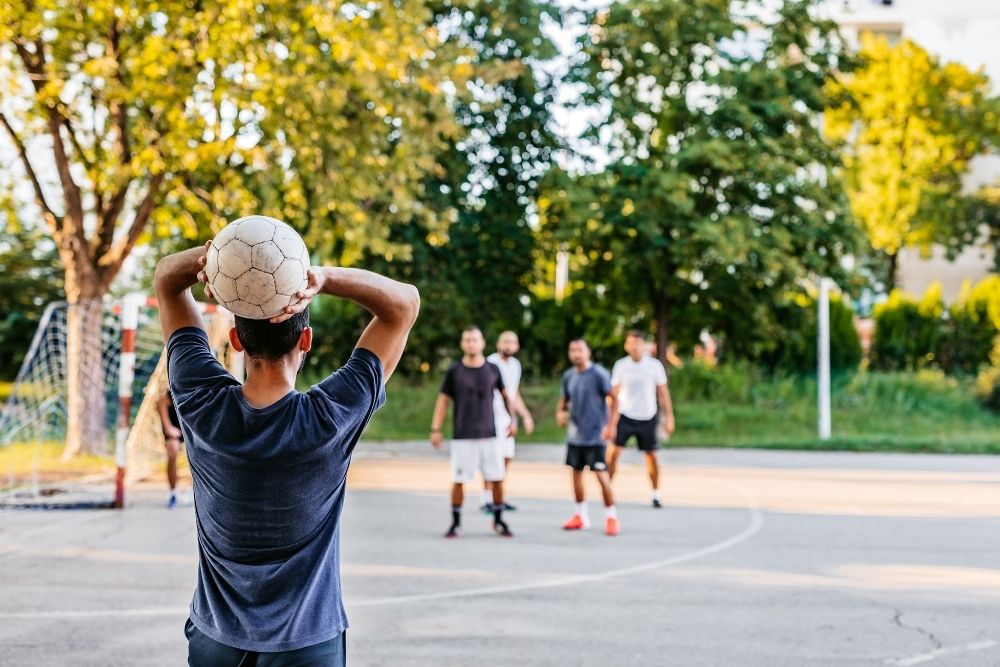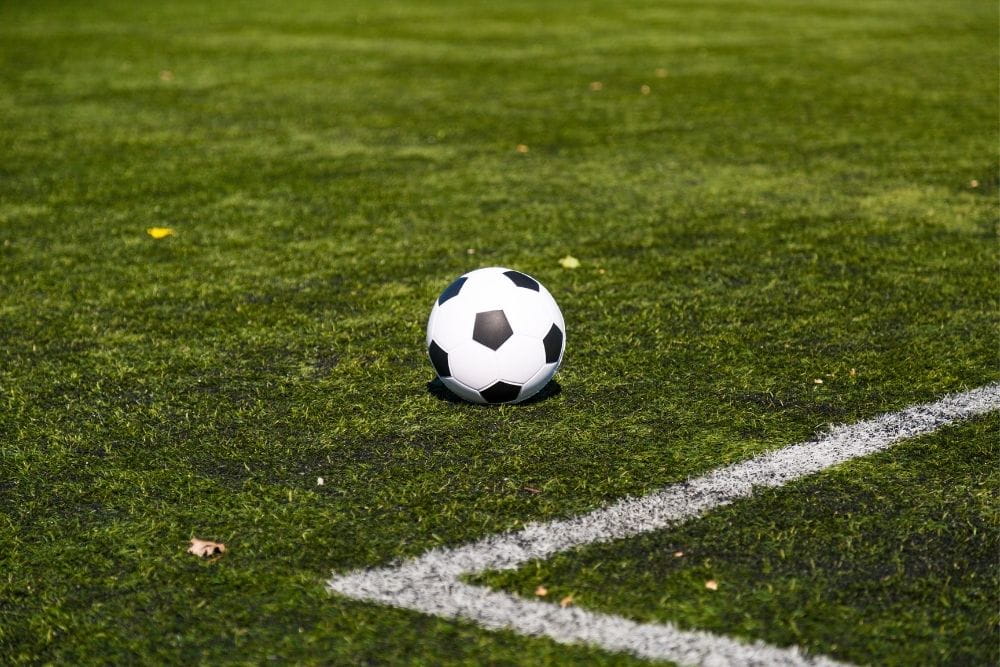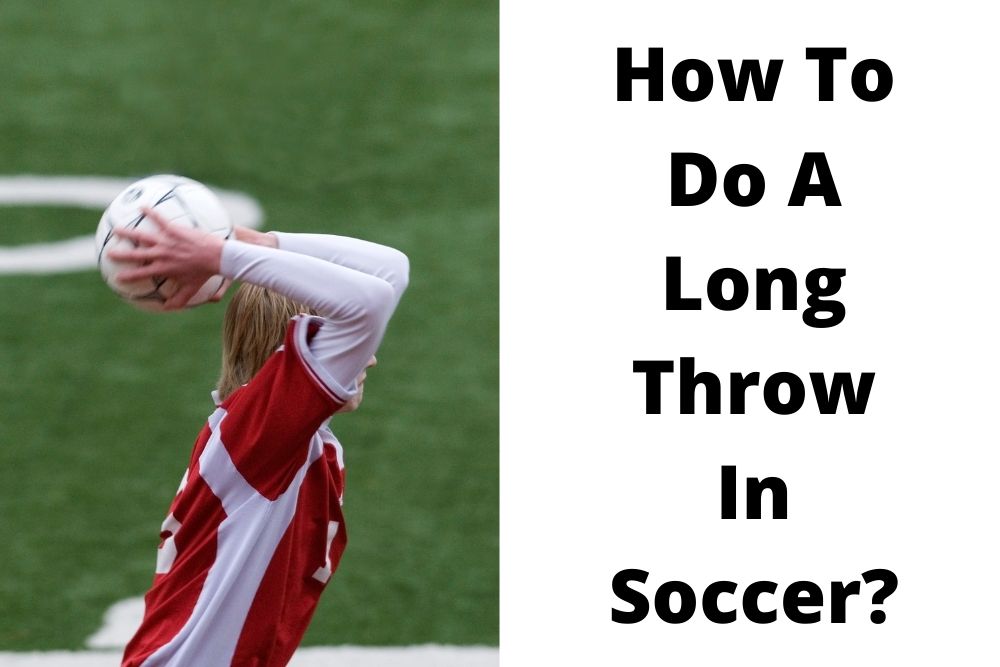Long throw-in has been part of the soccer rules for years. The act of long throw-in has enabled different teams to win over their opponents and return home with trophies.
Soccer players often consider long throw-ins to create a new opportunity for their team. This technique can also serve as an offensive tactic to move closer to the opponent’s goalpost.
Before a throw-in is awarded in soccer, the ball must have crossed the touchline during gameplay. According to Law 15, The Throw-in, of the Laws of the Game, the opposing team is awarded a throw-in when a team’s player puts the ball out of play through either side of the touchline.
In this article, you will learn different ways to do long throw-ins during soccer games.
Quick Navigation
Important things to know about a throw-in
Before picking up the soccer ball to make a long throw-in, you are expected to pay close attention to specific details to take advantage of the available opportunity to restart play.
Long throw-in can serve as an excellent opportunity to win the game if your team pays attention to the following details.

Does the opportunity favor a long pass?
Although the article focuses on long throw-ins, its use has to be appropriate. For example, a long throw-in can be used as a long pass to get the ball across to fellow teammates far away on the pitch.
In other words, a long throw-in is necessary when trying to push offensive play deeper into the opponent’s half or goal area.
Position of the opponents
Depending on where the throw-in takes place, opposing team members come closer to tackle and win back possession. While they may be focusing on regaining possession, a long throw-in helps take advantage of lurking opportunities by sending the ball farther into the pitch.

Opponents are, by law, required to stand at least 2 meters from the point from which a throw-in is to be taken. This allows enough space for a player to throw the ball to a teammate.
What constitutes a valid throw-in?
To make a throw-in, the player must stand facing the field of play, irrespective of the chosen approach or method.
At least, a part of the player’s feet must be on the touchline or outside the field of play. In addition, the player is expected to stand in the area/point from which the ball exited the pitch.
The soccer ball must be thrown with both hands and be initiated from behind and then over the head.

The ball should not touch the ground of the pitch before making contact with a player. If this happens, the match referee instructs the player to retake the throw.
An outfield player can only re-enter into the pitch when the ball leaves his hand. An indirect free-kick is awarded if a player steps into the field with the ball in his hands while making a throw-in.
Gameplay restart
The throw-in is listed in Law 8 (The Start and Restart of Play) of the Laws of the Game as one of the ways to restart play in soccer.
In simpler words, a throw-in is ideal for restarting play when the gameplay is stopped because the soccer ball exits the field of play through the touchlines.
Trying to score a goal
It is important to note that a soccer player cannot score a goal directly with a throw-in. If or when a throw-in ball enters the opponent’s goal, the match referee awards a goal kick in favor of the opposing team.
If the thrower directly throws the ball into his goal net, a corner kick is awarded.

First ball contact
A throw-in is successful when a player, other than the one who throws it, makes contact with the ball. Simply put, the thrown in ball must touch a teammate or be intercepted by an opponent for it to be valid.
In addition, the thrower must not touch the ball after it has been thrown in unless it has made contact with another player.
In the same way, the player initiating the throw-in can decide to deliberately restart play by throwing the ball to make contact with an opponent. This way, the thrower is legally allowed to continue play.
Although rare, it has been used to create a good opportunity that resulted in a goal.
How to do a long throw-in soccer?
Making a long throw-in during a soccer game requires certain skills to take advantage of the given opportunity. If you want to throw in the soccer ball without making errors, you must deploy the following tactics to actualize success.
We will examine step-by-step methods to do a long throw-in in soccer effectively.
Method 1: The Run-up
As the name suggests, this throw-in method requires a bit of a run for extra thrust. So, here are the steps to flawlessly execute this method.
Step 1: Mark the spot where the ball exited the touchline
Before you walk up to make a long throw-in, you should mark the spot or area where the ball left the touchline. The match referee works alongside the linesman to know the exact area the ball went out.

Step 2: Move away from the touchline
The distance between you and the touchline will determine if you are making a long throw-in or a shorter throw-in. Since your goal is to create a long pass with the ball, you must step away from the throw-in spot.
Do this by taking a few steps back, away from the touchline. The allowable distance from the touchline will depend on the design of the soccer stadium.
Longer runs are possible in stadiums with tracks but it immediately makes the opponent aware that you’ll be making a long throw-in.
Step 3: Make the run
Long throw-in requires a lot of effort from you. Your feet must be active to enable you to make a successful throw-in.
As already stated, the available distance would determine the required run. Choose a distance that wouldn’t compromise the quality of the throw.
Note: If the ball is wet, use your shirt to wipe off as much wetness as you possibly can before you make the run.
Step 4: Place your hands on the ball firmly
As you run towards the touchline, hold the ball firmly. For better grip, place your hands on both sides of the soccer ball, forming a lock with your thumbs at the backside of the ball.

Step 5: Raise the ball over your head
This step is done immediately when your feet are on the touchline or you come to a halt from your run. Then, with a firm hold on the ball, you are expected to move it over your head to ensure an effective throw.
You cannot make a throw-in while having the ball in your front. Instead, your hands must come from behind to enable you to push the ball further into the soccer pitch.

Step 6: Prepare your back and shoulders for the throw-in
Lean back slightly while aligning your back and shoulders. This gives good leverage, coupled with the accumulated speed from the run, for a longer throw-in.
Step 7: Release your grip from the ball
Up until this point, you should have an intended target locked in. Then, with your back and shoulders leaned back, push your body forward as much as possible while releasing the ball from your grip.
If you followed the steps properly, you would have successfully performed a long throw-in.
Method 2: Stationary long throw-in
This is another way to achieve a long throw-in. Compared to the run-up method, this requires less energy for a build-up.
Here are steps to perform this method successfully.
Step 1: Prepare the ball for the throw
Soccer balls take a lot of beat and strike during gameplay. Sometimes the ball feels wet and slippery when held. It is safer to clean it up with your jersey to allow for a better grip.
Step 2: Stand on or after the touchline
To ensure the throw-in stays valid, keep the feet on the line or step away from it to avoid disqualification.
Step 3: Place ball behind and over the head
With the ball firmly placed on the hands, raise it over the head. Keep it around the area behind the neck.

Step 4: Lean backward
Long throw-in requires a certain amount of projectile that’s best achieved when you propel the body forward.
Step 5: Make the long throw-in
Throw as far as your hands can allow. Then, use the additional thrust gotten from leaning back to push the ball farther into the pitch.
To avoid losing possession, have a target (more preferably a teammate) in mind and try to get the ball to him or her.
Method 3: Flip/Acrobatic Long Throw-in
This is not your traditional long throw-in method. Unless you’re naturally acrobatic, you’ve no business attempting this method.
This does not, in any way, take its effectiveness away. Better put, it is a more advanced approach from the Run-up method.
The steps are the same but accompanied by a flip before a throw is initiated. Here’s an example of what an acrobatic long throw-in would look like.
Conclusion
The soccer laws permit all players, including the goalkeeper, to take a throw-in during a game. A long throw-in is an excellent way to advance play but can also lead to loss of possession if not effectively done.
The article focused on things to note before deciding if a long throw-in is needed. If it is, the article examines three methods to achieve it effectively.
Hi there, I’m Jay.
Soccer is everything in my life! My friends and I have created this blog with all our enthusiasm, passion, and understanding after years of playing pro soccer. Hope you will enjoy it!
